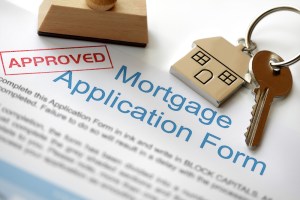Some 28% more people won’t be able to afford to buy property if mortgage rates reach 5% by the end of the year, Zoopla analysis shows.
The high value markets in London and the South East are expected to be most affected, as well as regions like Wales which have registered the greatest surge in house prices over the course of the pandemic.
 Buyers have three options, according to Zoopla: Put down a larger deposit, allocate more of their income to mortgage costs, or adjust their budgets and consider buying a smaller property or purchasing in a cheaper area.
Buyers have three options, according to Zoopla: Put down a larger deposit, allocate more of their income to mortgage costs, or adjust their budgets and consider buying a smaller property or purchasing in a cheaper area.
Richard Donnell, executive director at Zoopla, said: “Measures of housing market activity have been very resilient over the summer. A surge in home values over the pandemic and the rise of mortgage rates means we face a sizable hit to household buying power over the rest of 2022 and into 2023.
“While the recent changes to stamp duty are welcome, supporting activity in regional markets and the first time buyer market in southern England, the increase in mortgage rates will erode much of the gains. Homeowners that want to sell their home this year need to price realistically and seek the advice of an agent on local market trends.”
Return to a buyers’ market
Prices could weaken in this unstable environment.
Some 6% of homes listed for sale have seen the asking price adjusted downwards by 5% or more, the highest level since before the pandemic.
Re-pricing is a seasonal trend in Autumn, however given the economic backdrop and factors including rising energy prices and rising interest rates, Zoopla said this is a clear sign of a return to more of a buyers market after two years of a red-hot sellers market.
For sellers, this means there is more of an impetus to shift their mindset when it comes to asking price, and consider local market dynamics more closely as well as the potential types of buyer for their property in the local area.
However, these price adjustments are to be expected as the market shifts from conditions where demand greatly exceeds supply.
Zoopla predicted that price growth will start to slow more rapidly in Q4 and into 2023 as buyers react to the rising cost of borrowing.
 Marc von Grundherr, director of Benham and Reeves, said: “Higher mortgage rates are just one factor contributing to the cost of living crisis, but they’re certainly the most influential factor when it comes to the purchasing power of the nation’s homebuyers. The market is now at a bit of a tipping point where house prices have continued to increase rapidly, but the reality for many buyers is that they are no longer able to stretch themselves financially. This should be an important consideration for those looking to sell and a consideration that must be made when setting your asking price.
Marc von Grundherr, director of Benham and Reeves, said: “Higher mortgage rates are just one factor contributing to the cost of living crisis, but they’re certainly the most influential factor when it comes to the purchasing power of the nation’s homebuyers. The market is now at a bit of a tipping point where house prices have continued to increase rapidly, but the reality for many buyers is that they are no longer able to stretch themselves financially. This should be an important consideration for those looking to sell and a consideration that must be made when setting your asking price.
“Entering the market with over ambitious asking price expectations is likely to see a property languish with little to no attention from prospective buyers. Even sellers with a more sensible approach may still find that they have to reduce a tad in order to get a sale over the line. The very best course of action in any market is to price appropriately and a good local agent will give you the best idea of current market values in your area, as well as the appetite for your home once it has hit the market.
“Selling at the top end of this valuation will leave you some wiggle room to negotiate downwards to a price you are still happy with and to a price point that will ultimately get you sold. Yes, the latest stamp duty cuts will leave buyers a little extra in their back pocket when it comes to negotiating, but don’t be fooled into thinking this marginal saving will spur them into paying way over the odds for your home. It won’t.”
10 years of house price growth compressed into two years due to the pandemic
Houses in Wales recorded a 27% jump in prices over the pandemic which is the equivalent to 10 years of pre-pandemic growth compressed into just over 2 years, while a similar pattern has been seen in the North East and Scotland largely due to below-average price growth since 2009.
Whilst London has lagged the rest of the market in terms of annual growth rates, the average house value in London has increased by over £100,000 since the start of the pandemic.
In contrast, the average value of a flat in London has increased just 2.4%. Flat growth is the weakest market segment in percentage terms in the UK as buyers prioritise space and more working from home and working from home hitting the London market more.


